The Forgotten Wrecks of the First World War project identified large numbers of ships lost to naval sea mines off the South coast of England. The history of these deadly devices and how they were deployed is explored here by Maritime Archaeology Trust (MAT) volunteer, Roger Burns.
The history of naval sea mines goes back further than you might suppose – Chinese records indicate the use of naval explosives in the 16th century, but these were rudimentary underwater devices triggered by shore-based personnel against Japanese pirates, so used near land. During the American Revolutionary War in 1777, devices termed ‘floating explosive torpedoes’ were set adrift in the Delaware River, the target being British ships; they succeeded in sinking HMS Cerberus, killing four crew. From the mid-19th century, sea mines were used by the Russians in the Baltic, the Americans in their Civil War 1861-1865, and during the Crimean 1853-1856 and Russo-Turkish Wars 1877-1878. Development continued into the 20th century during the Boxer Rebellion 1899-1901 and the Russo-Japanese War 1904-1905.
Naval Weapons provides a historical summary of British Naval mines from the second half of the 19th century, and at the start of the First World War.
HOW NAVAL SEA MINES WERE USED
Deployed as self-explosive devices to destroy or damage enemy submarines and surface craft, minefields were typically used offensively to hamper passage or constrain enemy vessels from accessing the open seas or ports. They were also used as a defence in home waters against enemy incursions by creating zones of ‘safe’ passage for friendly forces. Once a minefield was laid, it became a psychological deterrent to the enemy, without the need for active engagement.
TYPES OF NAVAL SEA MINE
Bottom Mines: As the name implies, these mines rest on the seabed due to positive buoyancy and are usually deployed either in shallower water or against submarines in deeper water.
Moored Mines: With negative buoyancy, moored or ‘tethered’ mines are the more prevalent and can be deployed at a set depth below the sea surface, anchored to the seabed with a suitable weight. Initially, tether cables were of a fixed length to suit the location, until a hydrostatically controlled winch was employed, which could control the mine’s depth below the sea surface, the desired offset being set prior to launch. This method was used for antenna mines, which will be discussed later on.
Drifting Mines: Usually detonated by contact, these negative buoyancy mines do as their name implies and ‘drift’ on the sea surface. Drifting mines, by their uncontrolled nature, were outlawed at the Hague Convention of 1907. Mines that drifted were often moored mines that had broken free from their tether.
Other: A variety of similar mines exist, but these were mostly developed post 1919.
NAVAL SEA MINE DEPLOYMENT
There are three principal means of sea mine deployment – by air, ship and submarine. Aircraft offer an easy, fast and potentially safer means of deployment without having to endanger ships in an area where mines are already deployed, however, the number of mines that can be laid depends on the availability of suitable aircraft that are equipped to carry bombs.
Up to 1919, ship and submarine sea mine deployment was much more prevalent; the Allies used mostly ships whereas the Germans preferred submarines. Ships required control of the waters to and where the mines were to be laid, but they could carry large numbers of mines. Submarines offered a potentially covert method of offensive mine laying, but the number of mines they could carry were limited. These two methods, during the First World War, reflected the relative strengths of these enemies – the British needed to contain the German surface and submarine fleets; the Germans targeted British coastal waters to disrupt imports.
GERMAN NAVAL SEA MINES IN THE FIRST WORLD WAR
From First World War records, 15 of the German Type UCI Coastal Minelayers Class submarines were commissioned by 1916. They carried 12 mines and one machine gun with 150 rounds, but no torpedo tubes or deck gun. UC-5, shown below, was commissioned on 19 December 1915. By 27 April 1916 when it was captured after grounding on the Shipwash Shoal, 21km north of Margate, it had sunk 30 ships and damaged a further seven. 64 of the Type UCII submarines were commissioned, with seven torpedoes, 1x88mm deck gun with 133 rounds, and 18 Type UC200 mines. And 16 of the Type UCIII submarines were commission between 1916 and 1918, with seven torpedoes, 1x88mm deck gun with 230 rounds, and 14 UC200mines in six 1mØ tubes.
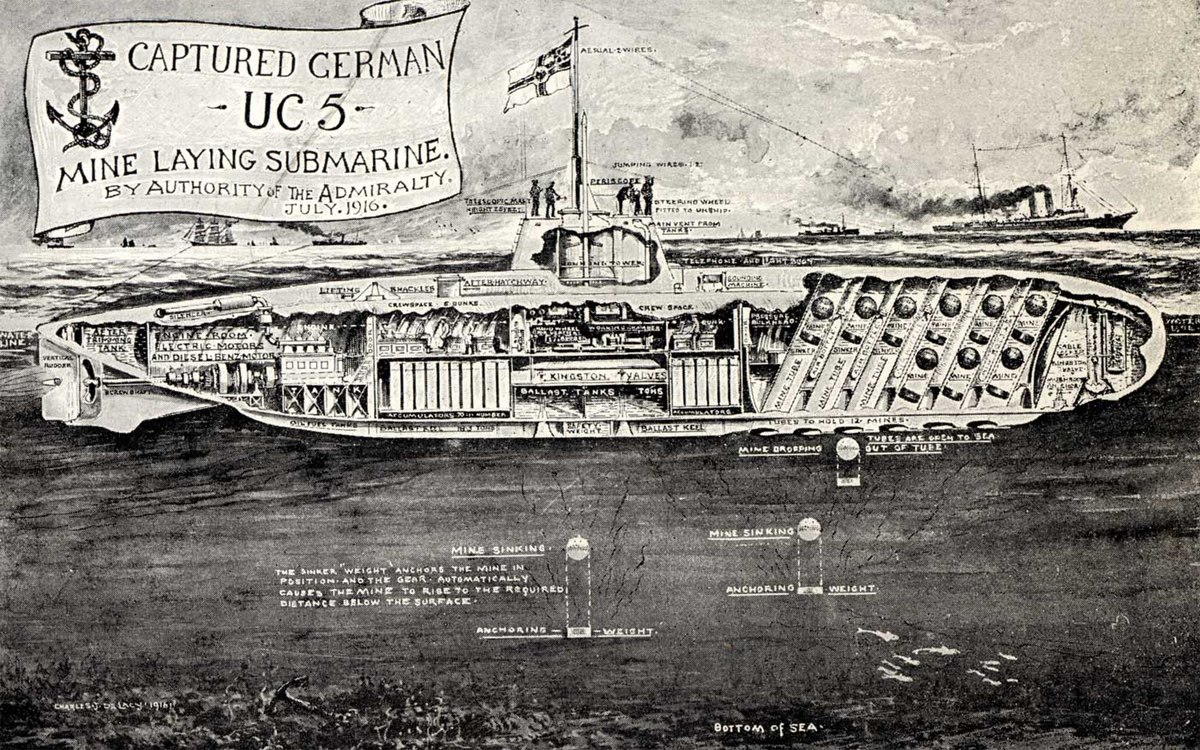
The Ocean Minelayers Class of submarine was larger and consisted of Type UE1, of which 10 were commissioned by 1916, equipped with four torpedoes, 1x105mm deck gun with 130 rounds, and 38 mines. Nine Type UE2 were commissioned between 1916 and 1918 with 14 torpedoes, 1x150mm deck gun, 494 rounds and 42 mines.
The Germans invented the ‘horn’ for use on contact mines. The image below is of a 14.5cm x 6cm diameter horn with an intact acid ampule. The protruding ‘horn’, when struck by a vessel, was designed to distort, breaking the ampule and releasing acid that completed an electrical circuit, generating enough current to activate the mine’s detonator.

BRITISH NAVAL SEA MINES IN THE FIRST WORLD WAR
From 1906, the ‘Navy Spherical Mine’ was developed and was the standard mine at the outset of the war; however, it was found to be unreliable. The Marks I and II are described – A moored mine using an automatic anchor and an arm-operated firing mechanism. Total weight of 900 lbs. (408 kg), charge was 250 lbs. (113 kg) gun cotton and diameter of 38 in (96.5 cm). Production started in late 1906 with about 1,000 on hand by 1907 but only 4,000 available by the start of World War I [NavWeaps]. The Mark III was similar, the difference being a smaller 245lbs (111kg) gun cotton charge. The British Ella mine was manufactured by Vickers and is further explained in the SS Eleanor Site Report.
Eleanor was a British tramp steamer launched in 1888 and, at the outbreak of war, was requisitioned by the Admiralty as a Mine Carrier, armed and designated Minecarrier No. 1. Carrying an extensive cargo valued at c. £63m (at today’s prices), which included more than 1,400 Spherical Mk3 and Ella mines with associated ordnance, Eleanor was en route from Immingham to Malta via Falmouth when, on 12 February 1918, it was torpedoed without warning by German submarine UB-57, a Type UBII, and sunk approximately 10 miles south west of Isle of Wight. MAT dived the wreck in 2015 and 2017. The resulting Site Report for Eleanor includes extensive detail of the ship’s cargo and remains. It appears that the vessel broke its back.
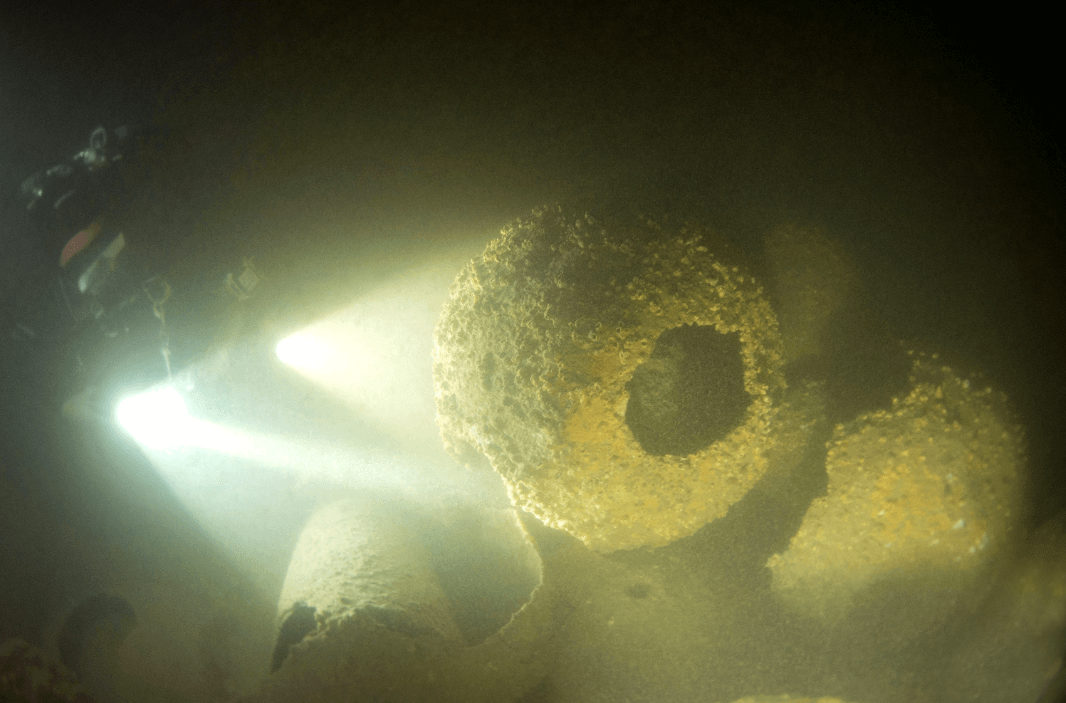
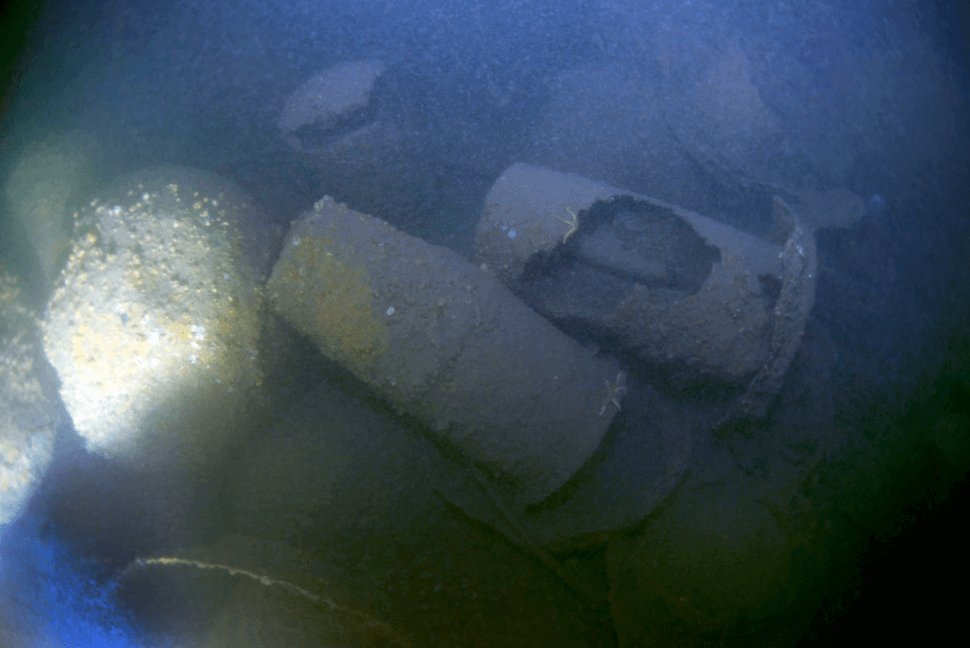
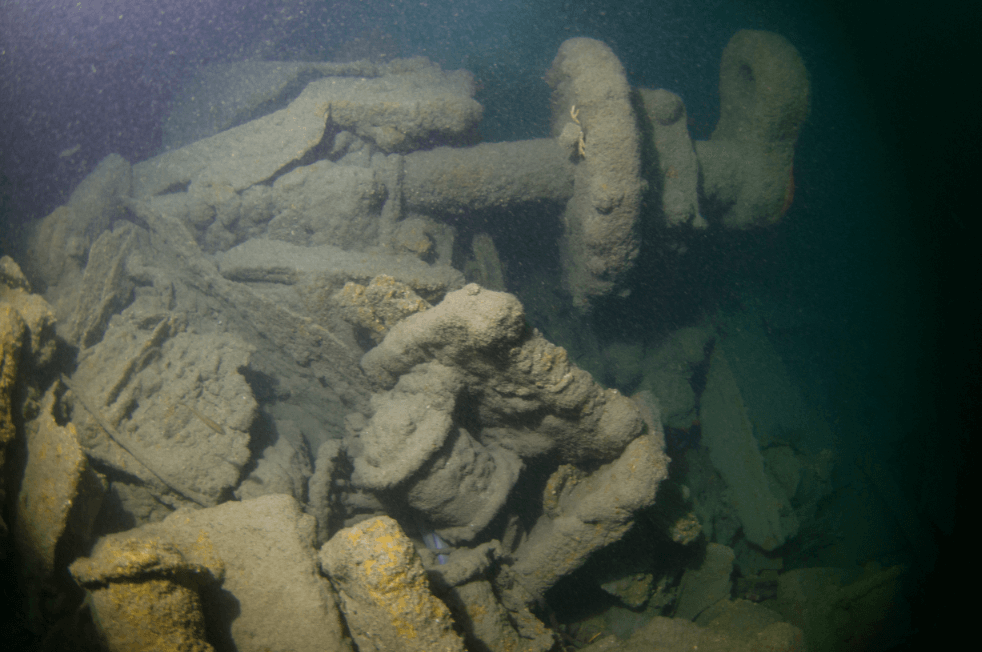
Barton Hunter, the only survivor of SS Eleanor, is remembered at Lives of the First World War. He also features in two audio letters as part of MAT’s Shipwreck for the Senses project spoken here. His daughter kindly donated his uniform to MAT’s Shipwreck Centre & Maritime Museum on the Isle of Wight where it can be seen on display.
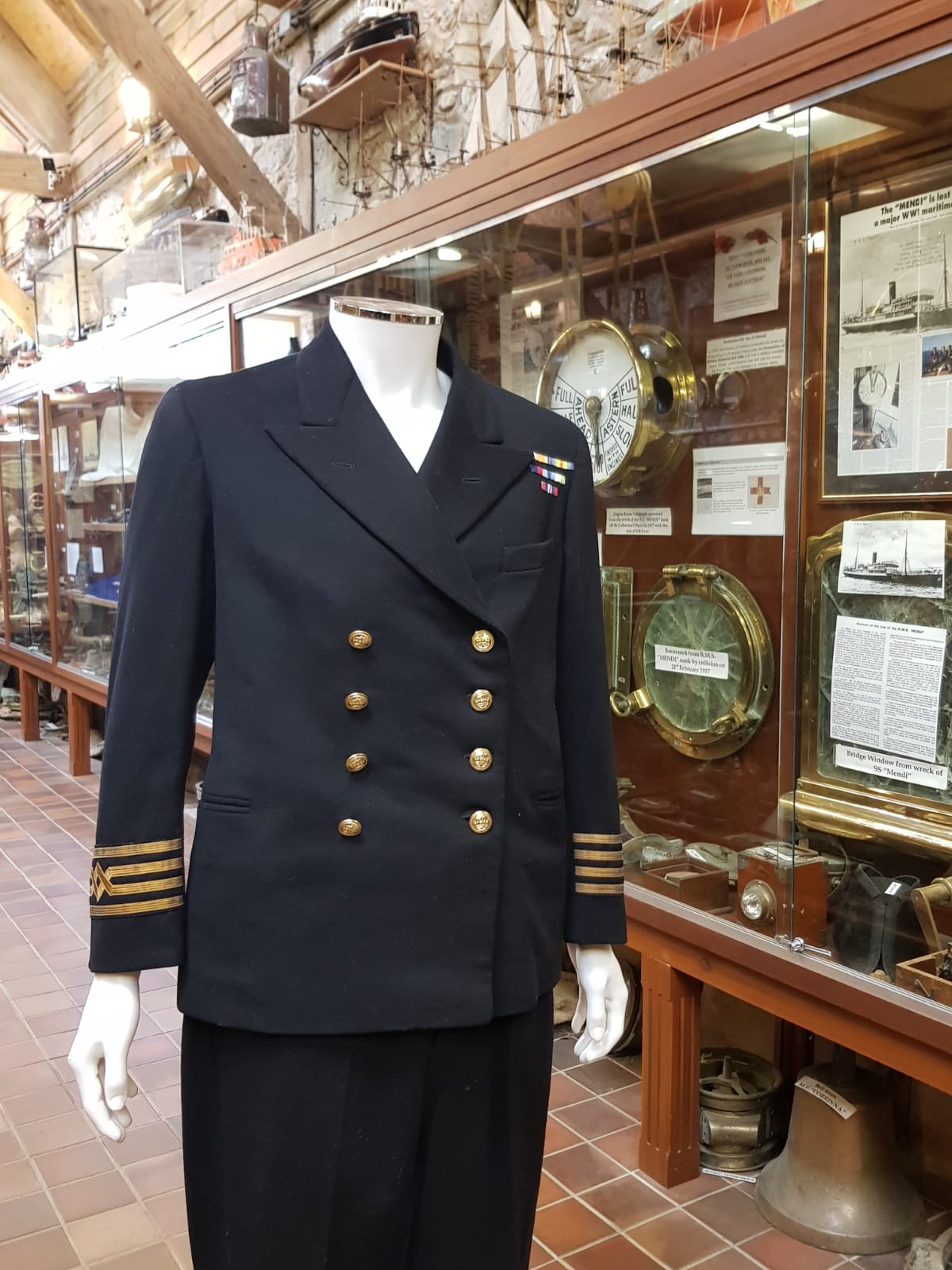
SEA MINE BARRAGES
Apart from typical offensive and defensive deployment in minefields, Britain embarked on mine barrages in an attempt to limit the German submarine menace which, incidentally, sunk more ships in the First World War than the infamous U-Boat Wolf Packs of the Second World War, siting these barrages:
- Dover Barrage – begun in February 1915 the Dover Barrage consisted of a 25km series of so-called light steel indicator nets anchored to the seabed at various depths and used to effectively capture enemy submarines by entanglement. The indicator nets were accompanied by minefield layers, also at various depths. Finally, British destroyers were deployed to patrol the area. The first success was the loss of German submarine U-8 on 4 March 1915. The Germans found it possible to traverse the barrage, causing the British to improve its effectiveness, spending two months from November 1917 shifting it east between Folkestone and Cap Gris Nez.
- North Sea Barrage – not to be confused with the Northern Barrage in the Second World War, this was a very large minefield laid by the British with substantial help from the Americans between Orkney and Norway to deter German submarines from accessing the Atlantic. This created challenges, not least the fact that mines needed to be deployed at a depth of 270m and mines up to this point hadn’t been deployed over 90m. This led to the new Mk VI mine. The Mk VI was designed to be anchored at 60m depth, which was regarded as the likely lowest operational depth of a German submarine. It had five conventional contact horns and an antenna comprising a copper wire attached to and rising above the mine with a float. (The then maximum design operational depths of German submarines varied between 50m and 75m). A passing submarine would cause the antenna, if touched, to activate the mine. The plan (below) indicates the Barrage location, comprising 18 rows of 70,177 mines. Images of the Mk VI mine are within the SS Eleanor report.
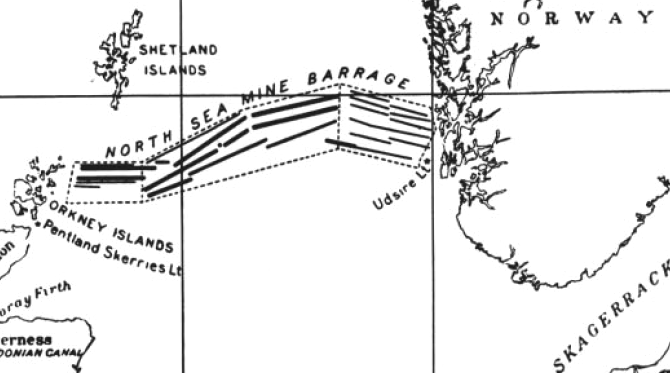
- Heligoland Barrage – a much smaller but effective Barrage was the Heligoland Bight, which inhibited the Germans and cut off the Hocheeflotte from the North Sea.
German minefield maps are not available online but it is estimated that Germany laid more than 43,000 mines. Within the area covered by MAT’s Forgotten Wrecks project, vessel losses from naval sea mines and torpedoes of the approximate 1,150 total vessels sunk were about 13% and 34% respectively.
FURTHER READING
Suggested sources include:
Bibliography
Interesting Engineering. Accessed February 2021. Available at https://interestingengineering.com/how-do-naval-mines-work
Wikipedia: Mines. Accessed February 2021. Available at https://en.wikipedia.org/wiki/Naval_mine
NavWeaps. Accessed February 2021. Available at http://www.navweaps.com/Weapons/WAMBR_Mines.php
U-Boat. Accessed February 2021. Available at https://www.uboat.net/wwi/types/
Dover. Accessed February 2021. Available at https://firstworldwar.com/atoz/doverbarrage.htm and https://en.wikipedia.org/wiki/Dover_Barrage#:~:text=The%20Dover%20Barrage%20was%20an%20underwater%20blockade%20of,by%20steel%20netting%20anchored%20to%20the%20sea%20bed
Wikipedia. Accessed February 2021. Available at https://en.wikipedia.org/wiki/North_Sea_Mine_Barrage
Mine Sweeps. Accessed February 2021. Available at https://www.mcdoa.org.uk/MCD_History_Frames.htm
